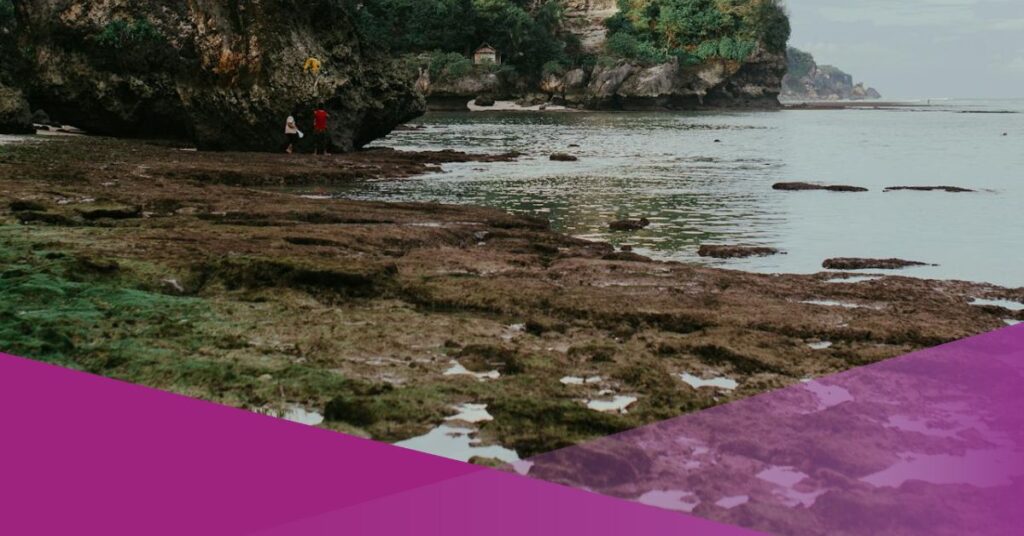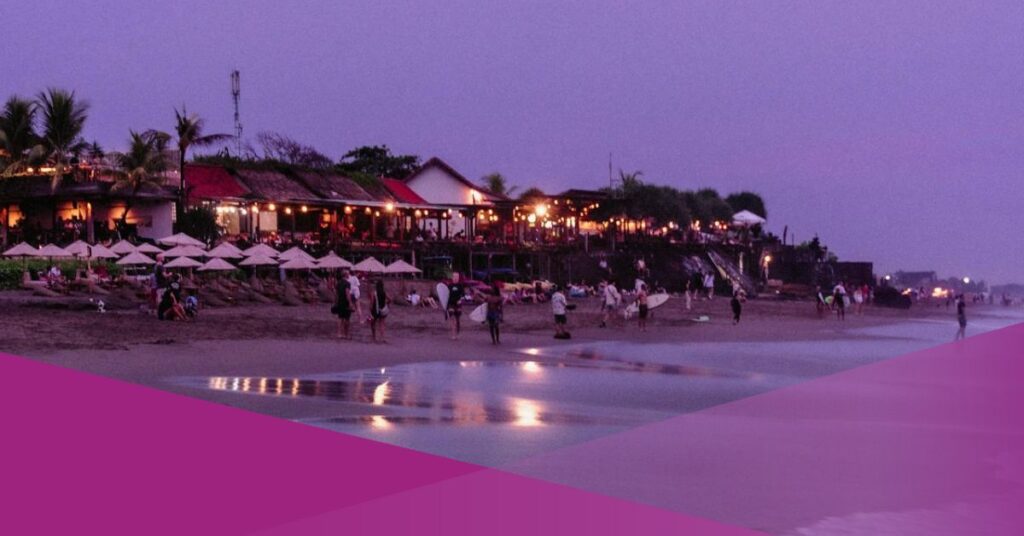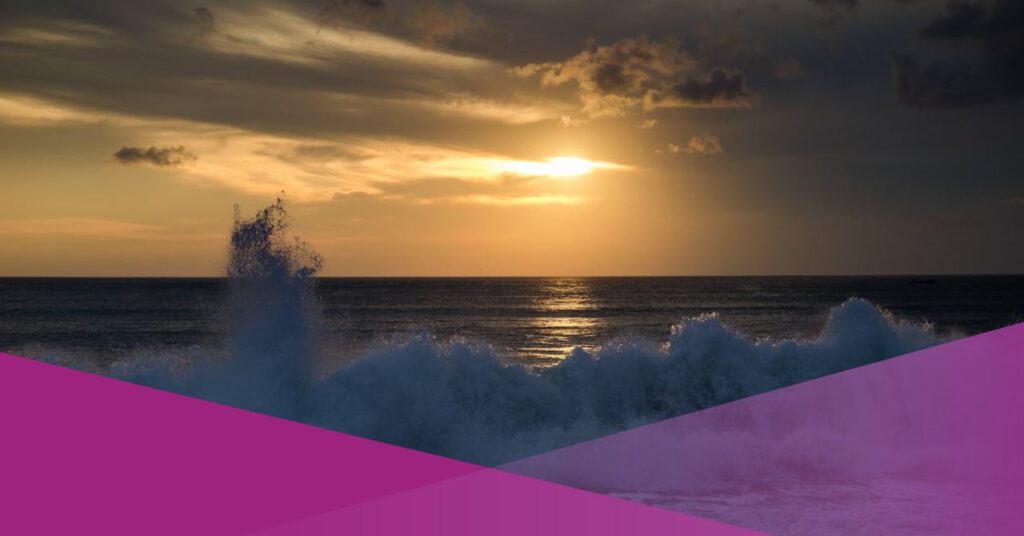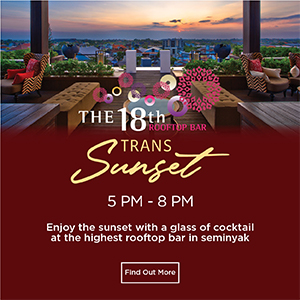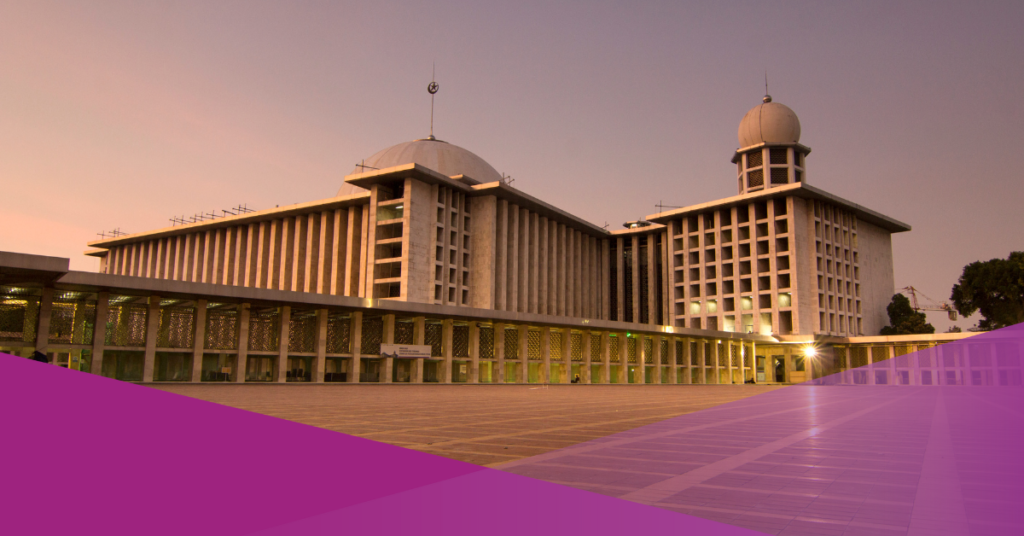Nestled in the heart of Indonesia lies the enchanting Gunung Sewu Geopark, a geological wonderland that has garnered international acclaim by earning recognition from UNESCO. Spanning the Yogyakarta and Central Java provinces, this geopark has incredible forces shaping its beauty. In this article, we will explore the beauty of Gunung Sewu Geopark in Indonesia and the best attractions to visit around the geopark.
Gunung Sewu Geopark or Sewu Mountains: A Panorama of Indonesia Beauty
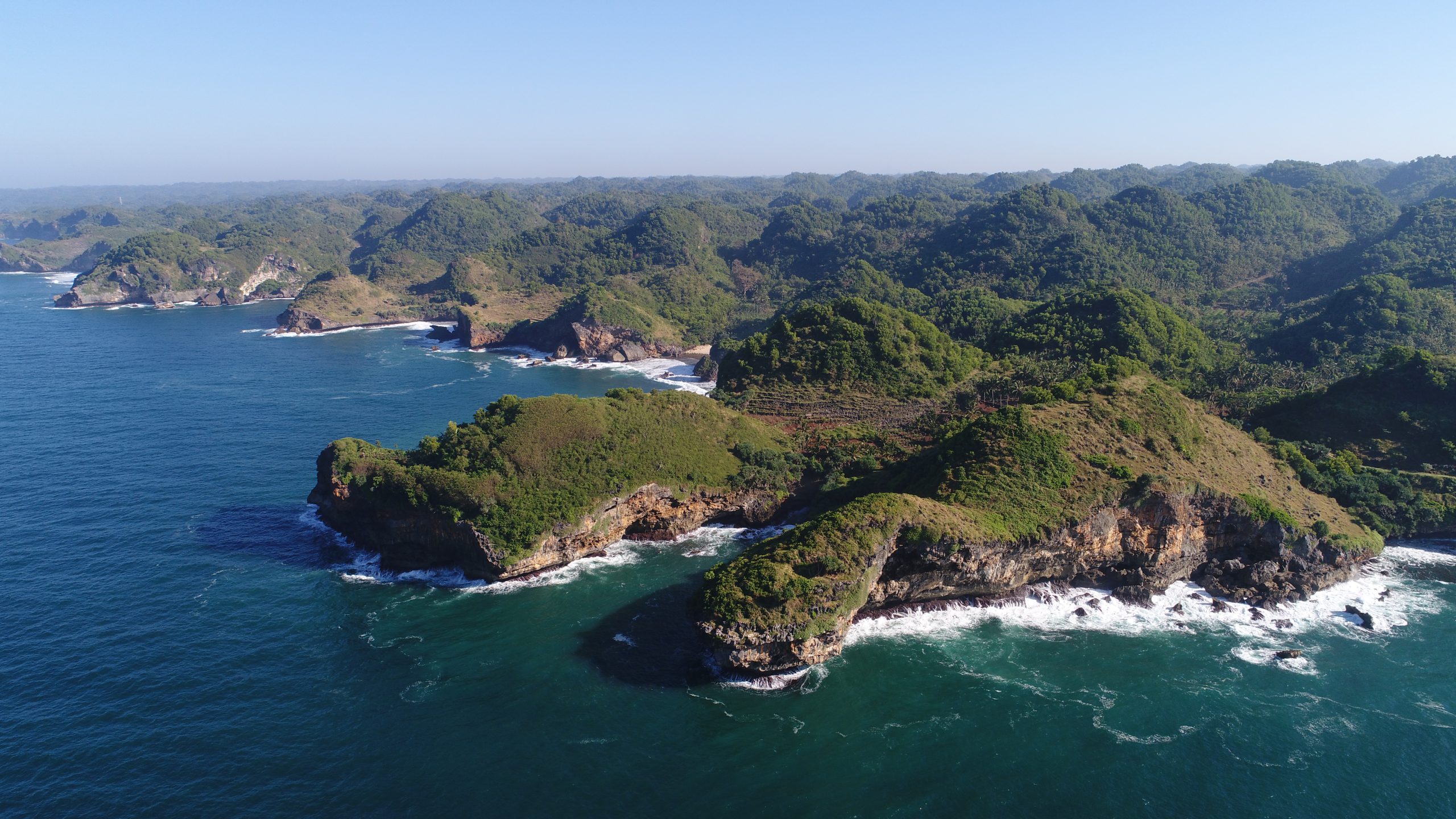
Gunungsewu is recognized as a tropical karst area of the Sewu spanning three districts and three provinces, namely Pacitan District in East Java, Gunung Kidul Regency and Wonogiri Regency in Central Java. Encompassing an area of approximately 1500 km2, the mountains stretching along the southern coast of Gunung Kidul Regency. It has become a popular tourist destination easily accessible from 70 kilometres from Yogyakarta, Wonosari, Wonogiri, and Pacitan. What sets this area apart is its diverse natural beauty, geomorphological features, hydrogeological phenomena, conical hills, and high-quality geological heritage, positioning it as a geopark of global significance on the Island of Java.
“Gunung Sewu” translates to “Thousand Mountains,” so many karst formations, limestone hills, and ecosystems characterise the national geopark. Recognized for its outstanding geological features and rich biodiversity, the Gunung Sewu Geopark invites explorers on a journey through time. It offers a tapestry of natural wonders and cultural treasures that showcase Indonesia’s commitment to preserving and celebrating its unique geological heritage.
Best Attractions to Visit Around Area of the Sewu Mountains Global Geopark
Gua Pindul ( Pindu Cave )
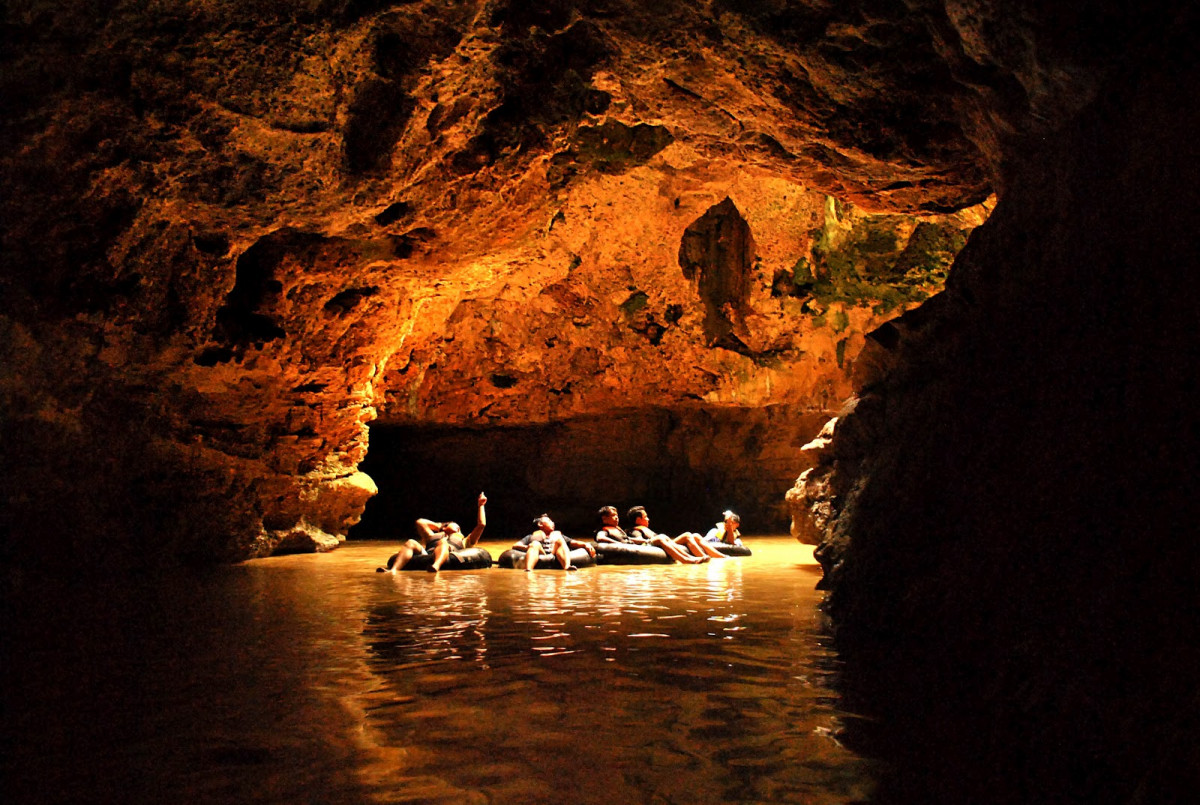
Pindul Cave is around 350 meters long with a normal exploration time of around 40-60 minutes, although it can vary depending on the visitor’s situation, conditions and wishes. Pindul Cave has an average width between walls of 4 meters, with a top wall height of around 5 meters from the surface water. The depth of the river water in this cave reaches 1-12 meters.
Pindul Cave is divided into three zones or rooms. The first zone is bright, with water depths between 1 and 5 meters. At the mouth of the cave, there is the third largest stalactite in Pindul Cave, which is about 1 meter long and almost 1 meter in diameter. Zone two, the dim zone, is marked by a stalactite gate. Zone three is eternal darkness with water depth reaching 12 meters.
Gunung Api Purba Nglanggeran
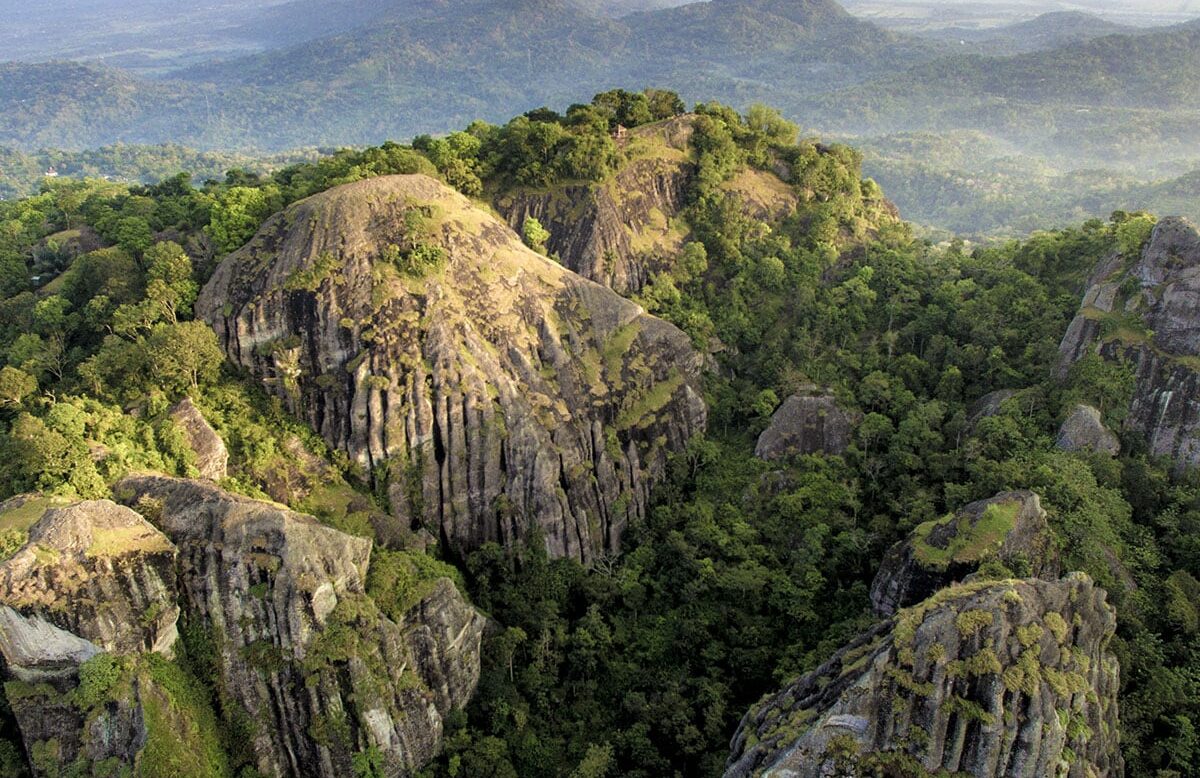
Gunung Api Purba Nglanggeran primeval volcano, located in the Yogyakarta Special Region of Indonesia, is a fascinating geological formation that offers a glimpse into the Earth’s ancient volcanic history. Translated to “Ancient Nglanggeran Volcano,” this site is characterized by its dormant volcano cone surrounded by lush greenery.
The volcano last erupted around 60,000 years ago, leaving a unique terrain shaped by volcanic activity. Gunung Api Purba Nglanggeran visitors can explore its well-maintained trails leading to the summit, where breathtaking panoramic views await. Gunung Api Purba Nglanggeran offers an immersive experience that blends natural wonders with historical significance.
Hutan Wanagama
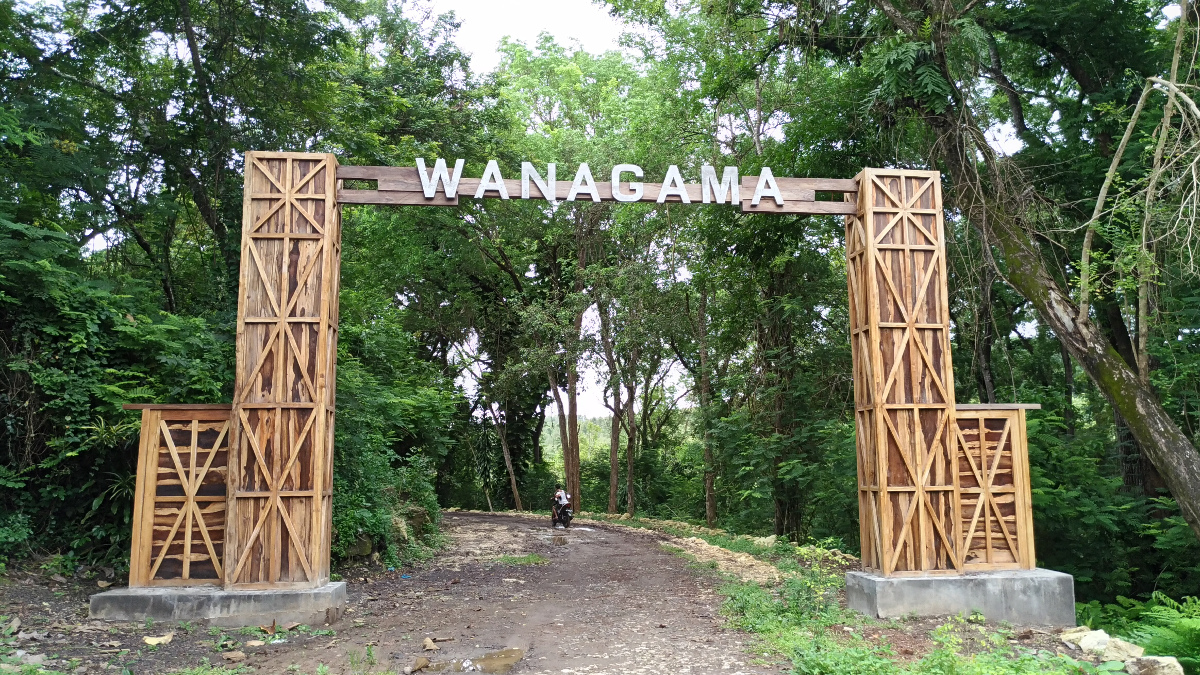
Hutan Wanagama is well-known to local, situated in the heart of Java, Indonesia, is a captivating natural beauty and biodiversity expanse. Spanning 550 hectares, this lush forest, aptly translated as “Wanagama Forest,” serves as a sanctuary for various plant and animal species. As an integral part of Gadjah Mada University, Hutan Wanagama serves dual roles as both an educational oasis and a haven for scientific research. Towering trees, diverse ecosystems, and the melodic symphony of birds create an immersive experience for visitors.
Sungai Ngalang ( The Kali Ngalang River )
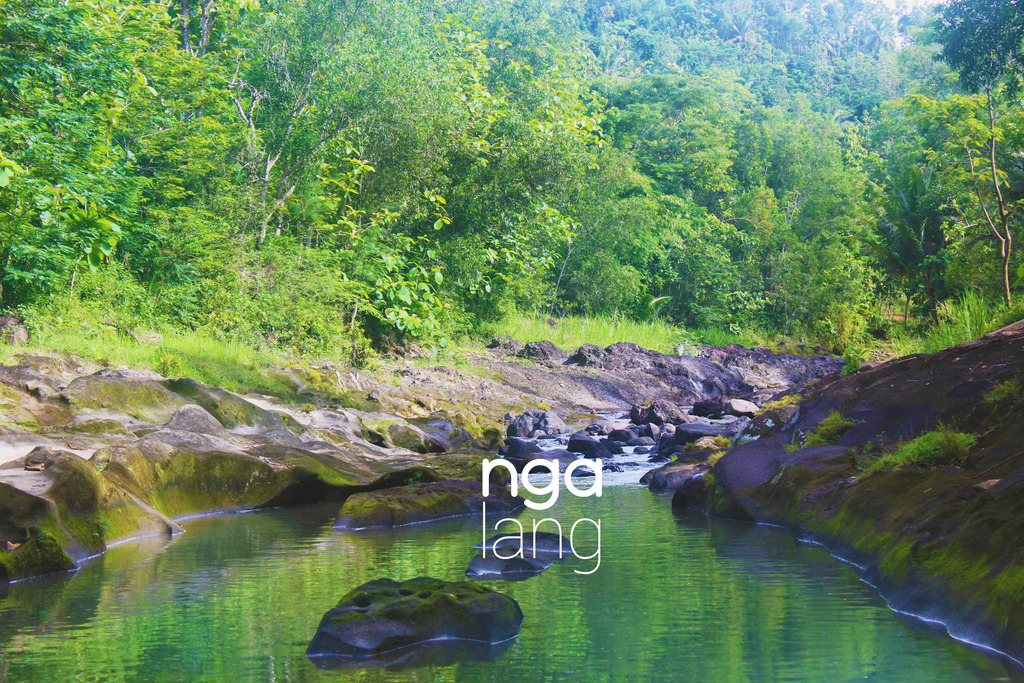
The Kali Ngalang Geological Site is one of the sites included in the UNESCO global geopark Gunungsewu site. The location is in Kapanewon Gedangsari District, Gunungkidul Regency, Yogyakarta Special Region. This site is between a river stretching for 15 kilometres (km).
This site is characterized by the phenomenon of the eruption of the Nglanggeran Ancient Volcano, estimated to have been 16 million years ago, giving rise to rocks that were once beach sand shaped like the outlines of sand animals. This process is so interesting that it has been designated as one of the 20 geological heritages in DIY through the Decree of the Minister of Energy and Mineral Resources Number 13.K/HK.1/MEM.G/2021 concerning the Determination of the Geological Heritage (Geoheritage) of the Special Region of Yogyakarta.
Pantai Krakal ( Krakal Beach )
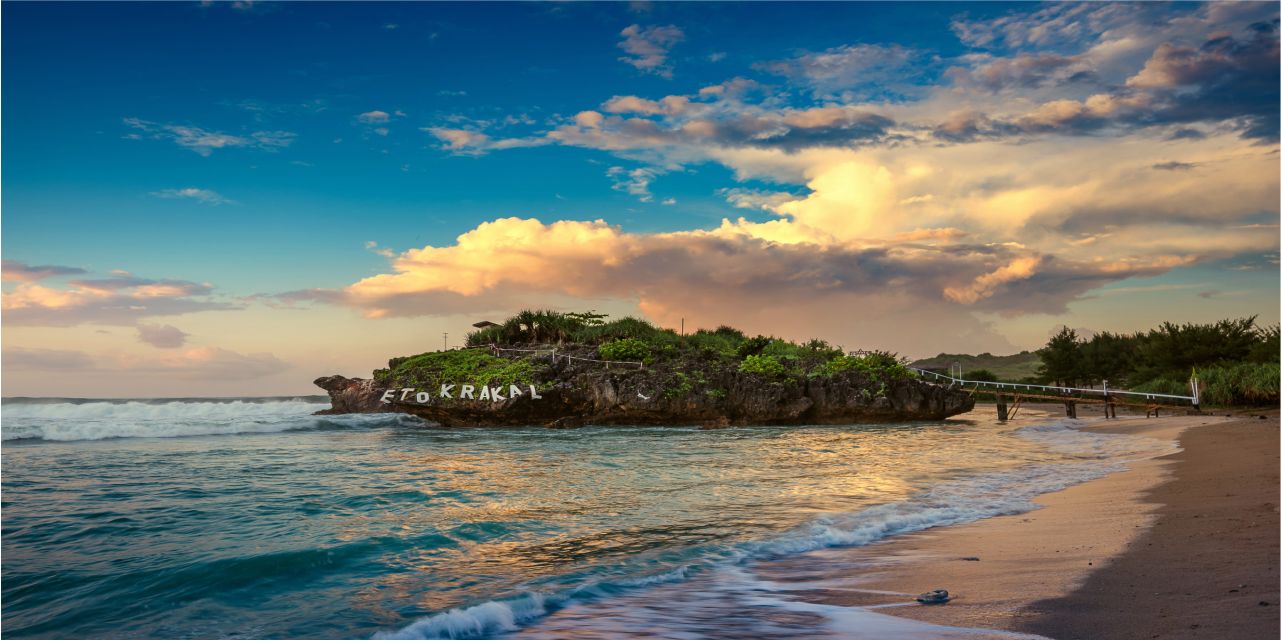
Pantai Krakal, nestled along the southern coast of the Yogyakarta Special Region in Indonesia, is a pristine beach that captivates visitors with its natural beauty ambience. With its golden sands stretching for kilometres, the beach offers a picturesque retreat where the rhythmic sounds of the waves harmonize with the gentle sea breeze.
Gunung Sewu Geopark: Unveiling Earth’s Timeless Legacy and Cultural Tapestry Amidst Geological Wonders
Gunung Sewu Geopark offers a remarkable journey through time, where visitors can witness the enduring legacy of Earth’s processes. The park’s expansive network of caves, underground rivers, and lush greenery provides a haven for biodiversity, making it a crucial hub for conservation efforts. Beyond its geological allure, Gunung Sewu Geopark is deeply intertwined with the region’s cultural heritage, featuring ancient temples, traditional villages, and a rich tapestry of local customs. This geopark invites exploration of its geological wonders and provides a holistic experience that celebrates the harmonious coexistence of nature and culture in Indonesia.


